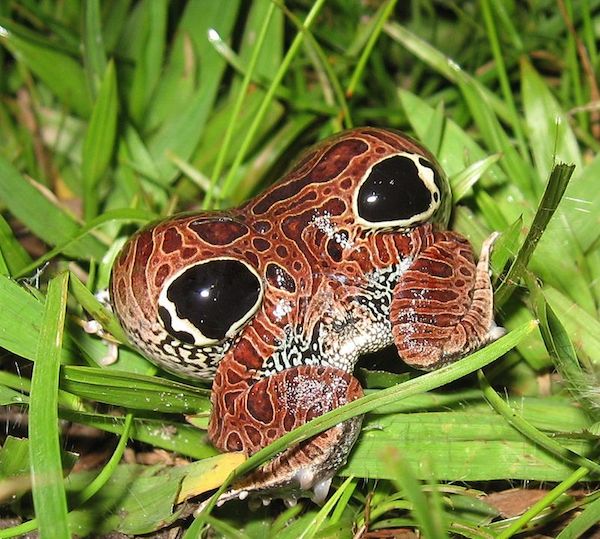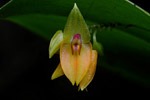Tropical grassland biomes often defined, mismanaged as forests
Trees absorb CO2 and trap carbon molecules, and countless are lost as forests are felled around the world. So why not plant as many as we can? A recent paper by Dr. Kate Parr and collaborators from the University of Liverpool suggests otherwise; the planting of more trees through international reforestation schemes may actually be harming tropical grasslands, which harbor endemic species and offer unique ecosystem services.
Tropical grassy biomes (TGBs) are characterized by an abundance of fire-tolerant grasses that thrive under dry conditions. According to Parr’s study, which was published in Trends in Ecology and Evolution, TGBs tend to be miscategorized as forest under international reforestation schemes, which can lead to ineffective management.

South America’s cerrado grasslands is one of the world’s most endangered biomes. Cattle ranching and soy farming has destroyed nearly 80 percent, and none is currently protected. The region is home to countless species, dozens of which are found nowhere else. Photo by Angela Depaula.
“Whilst it is generally assumed that ‘more trees are better’ in tropical rainforests, this is not necessarily the case for tropical grassy ecosystems,” Parr told mongabay.com, “and so the outcomes of global carbon and conservation initiatives, which include the UN’s Clean Development Mechanism (CDM) and its Reducing Emissions and Deforestation Forest Degradation (REDD+) schemes, need to be better considered when they are applied to tropical grasslands.”
The CDM and REDD+ schemes aim to reduce CO2 by creating financial benefits for carbon sequestration, namely through reforestation and discontinuing deforestation. The schemes define a “forest” using structural details such as area, the density of the canopy, and height of trees. These criteria, however, ignore functional factors – such as vegetation type – that characterize biomes.
The structural characteristics of TGBs can closely resemble those of forests, since the tree cover can vary widely depending on the amount of rainfall. Thus, applying only structural characteristics to identify forests can lead to misclassification and mismanagement of TGBs as forests.
 Tropical grassy biomes vary widely in species composition and tree cover. Photo by Parr et al. |
Management requirements for TGBs and forests differ considerably; for instance, forest management usually entails the suppression of fire, while grassy areas require periodic fires to maintain the unique biodiversity. Without fires, TGB species may suffer replacement by exotic species.
“Fire suppression … has resulted in a shift in system state from TGB to forest in only a few decades,” Parr noted. “For example, studies from the savannas of northern Australia and Brazil show this, as do simulation models.”
Miscategorization of TGBs is further exacerbated by interests to gain more financial benefits through maximizing areas eligible for REDD+. If a country shifts its definitions of forest to include sparser areas of tree cover, it can increase its eligibility for REDD+.
Tropical grassy biomes provide grazing ground for cattle, which is valuable for many communities around the world. They also provision water to local communities, as grasslands have high infiltration ability and help to maintain stream flow. Moreover, TGSs have significant underground root biomass, which stores approximately 15 percent of the world’s carbon.
“The distinctive evolutionary histories and biodiversity values of these areas needs to be recognized by conservation managers and policy makers,” Parr said. “The vast extent of tropical grasslands and the reliance of human welfare on them mean that they deserve far more research and conservation attention than they currently receive.”

The Cubaya dwarf frog (Physalaemus nattereri) is found in tropical grasslands in South America and has an unusual mooning defense against predators. It also secretes a foul substance from glands under its eyespots. Photo by Felipe Gomes.
Citations:
- Parr, C. L., Lehmann, C. E. R., Bond, W. J., Hoffmann, W. A., & Andersen, A. N. (2014). Tropical grassy biomes: Misunderstood, neglected, and under threat. Trends in Ecology & Evolution, 29(4), 205-213. doi:10.1016/j.tree.2014.02.004
Related articles
New study finds environmental damage globally may cost more than U.S. GDP
(06/06/2014) A new study added up all the world’s ecosystem services – from carbon storage and crop pollination, to recreation and flood mitigation – and found, every year, nature provides $145 trillion in benefits. It also indicates that land use changes, most of which has been caused by humans, may be reducing these benefits by trillions of dollars every year.
Key highland habitat for rare condor protected in Ecuador
(01/24/2014) Conservationists have acquired a 2,800-ha (7,000-acre) property that completes the acquisition of some 108,000 ha of key Andean Condor habitat in Ecuador.
Population growth and associated food demand to take heavy toll on rainforests

(01/16/2014) Human population growth and associated food demand will likely take a heavy toll on tropical ecosystems unless major shifts occur in how crops are produced and consumed, warns a new review published in Trends in Ecology & Evolution. Noting that projections published by the U.N. now forecast the human population to swell to 11 billion before the end of the century, William F. Laurance, Jeffrey Sayer, and Kenneth Cassman highlight potential impacts of agricultural expansion on biodiversity in the tropics.
Good news: Refuge for last blue-throated macaws doubles in size in Bolivia
(01/02/2014) A reserve that is home to the world’s largest population of the critically endangered blue-throated macaw (Ara glaucogularis) has been more than doubled in size, reports the American Bird Conservancy (ABC), a group that helped fund the expansion.
Scientists make one of the biggest animal discoveries of the century – a new tapir

(12/16/2013) In what will likely be considered one of the biggest (literally) zoological discoveries of the Twenty-First Century, scientists today announced they have discovered a new species of tapir in Brazil and Colombia. The new mammal, hidden from science but known to local indigenous tribes, is actually one of the biggest animals on the continent, although it’s still the smallest living tapir. Described in the Journal of Mammology, the scientists have named the new tapir Tapirus kabomani after the name for ‘tapir’ in the local Paumari language: Arabo kabomani.
Climate change could kill off Andean cloud forests, home to thousands of species found nowhere else

(09/18/2013) One of the richest ecosystems on the planet may not survive a hotter climate without human help, according to a sobering new paper in the open source journal PLoS ONE. Although little-studied compared to lowland rainforests, the cloud forests of the Andes are known to harbor explosions of life, including thousands of species found nowhere else. Many of these species—from airy ferns to beautiful orchids to tiny frogs—thrive in small ranges that are temperature-dependent. But what happens when the climate heats up?
Zoo races to save extreme butterfly from extinction

(08/15/2013) In a large room that used to house aquatic mammals at the Minnesota Zoo, Erik Runquist holds up a vial and says, ‘Here are its eggs.’ I peer inside and see small specks, pale with a dot of brown at the top; they look like a single grain of cous cous or quinoa. Runquist explains that the brown on the top is the head cap of the larva, a fact that becomes more clear under a microscope when you can see the encased larva squirm. I’m looking at the eggs of a Poweshiek skipperling, a species that is more imperiled than pandas, tigers, or bluewhales. Once superabundant, only several hundred Poweshiek skipperlings may survive on Earth today and the eggs I’m looking at are the only ones in captivity.